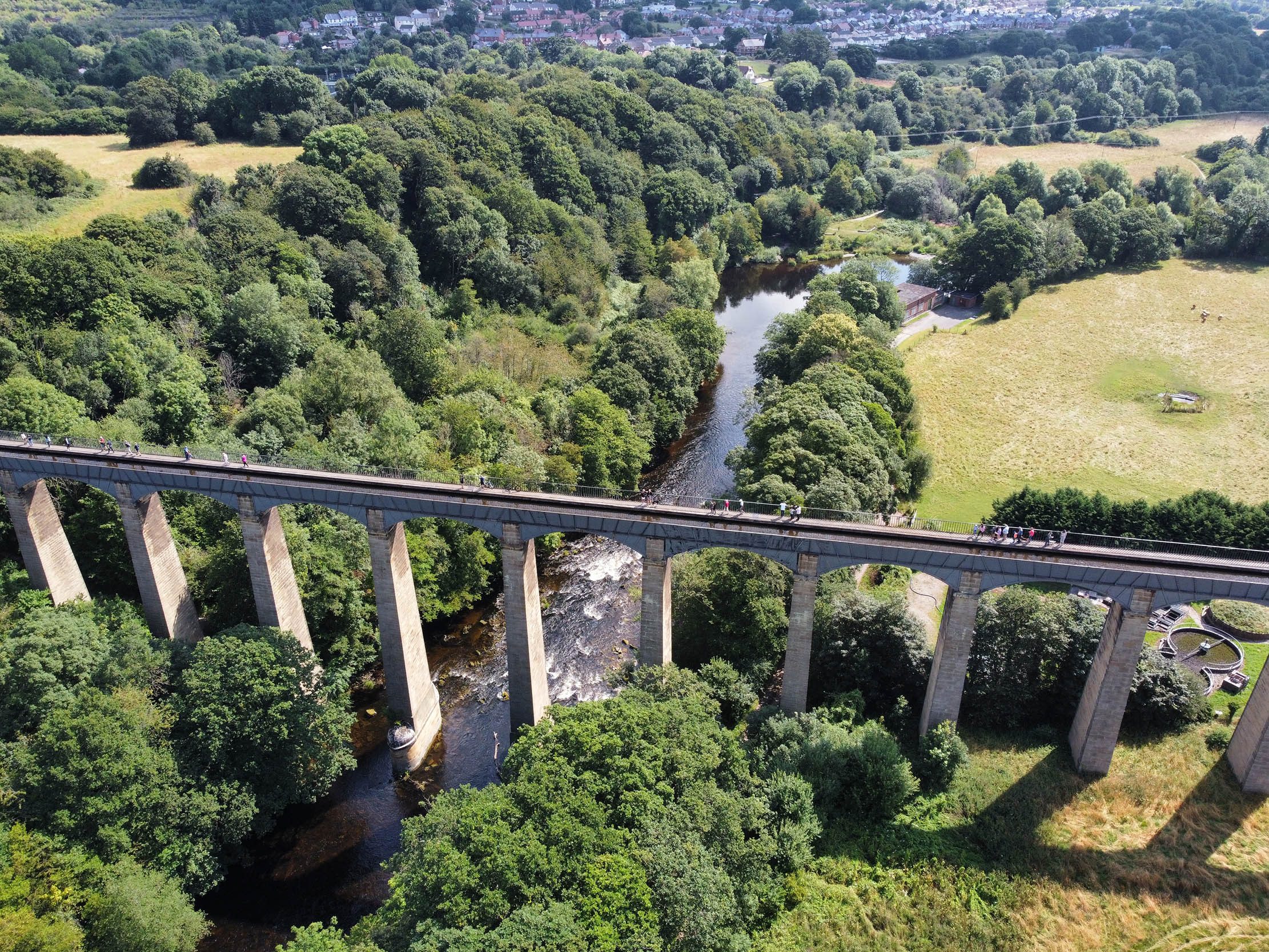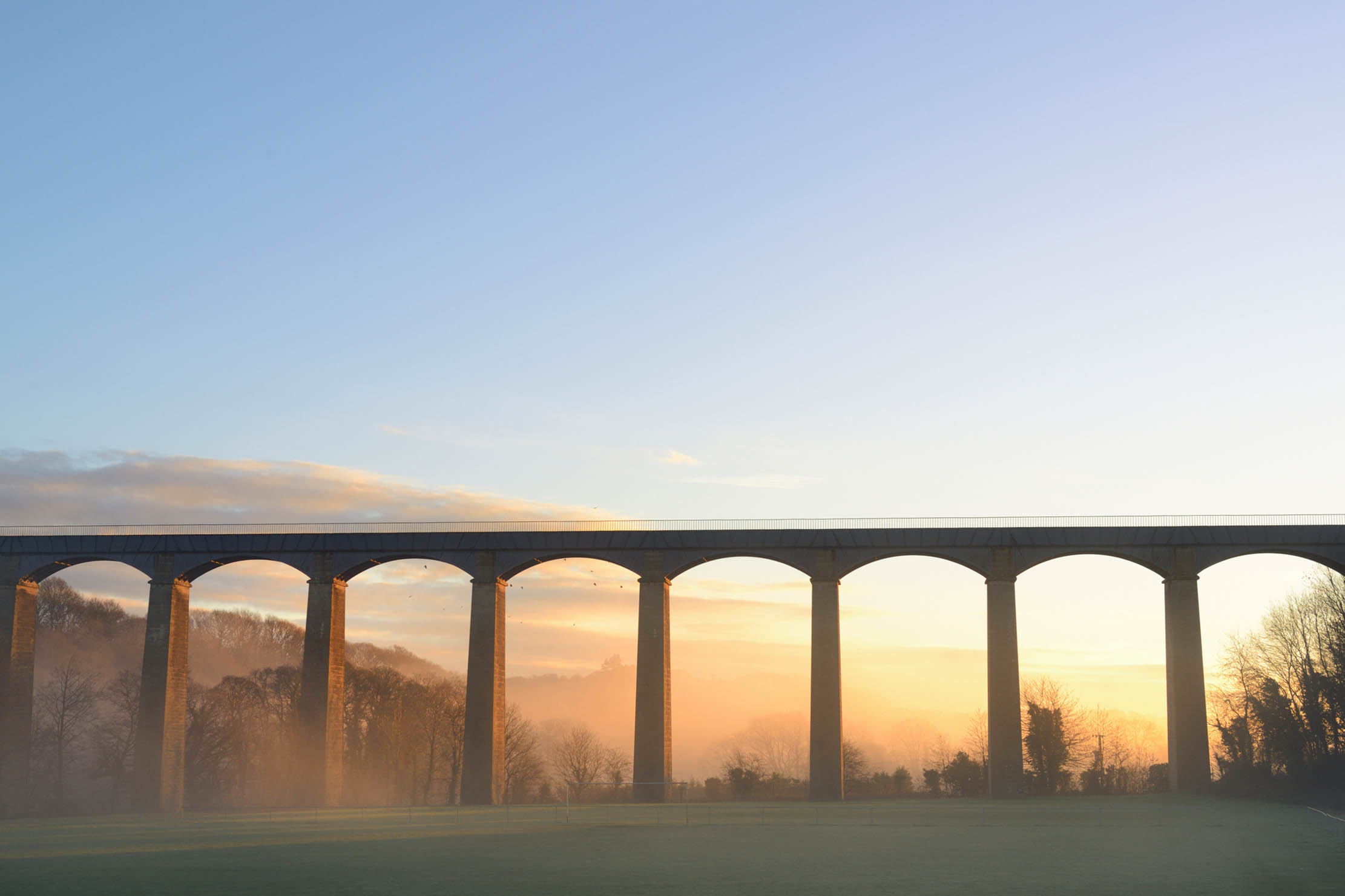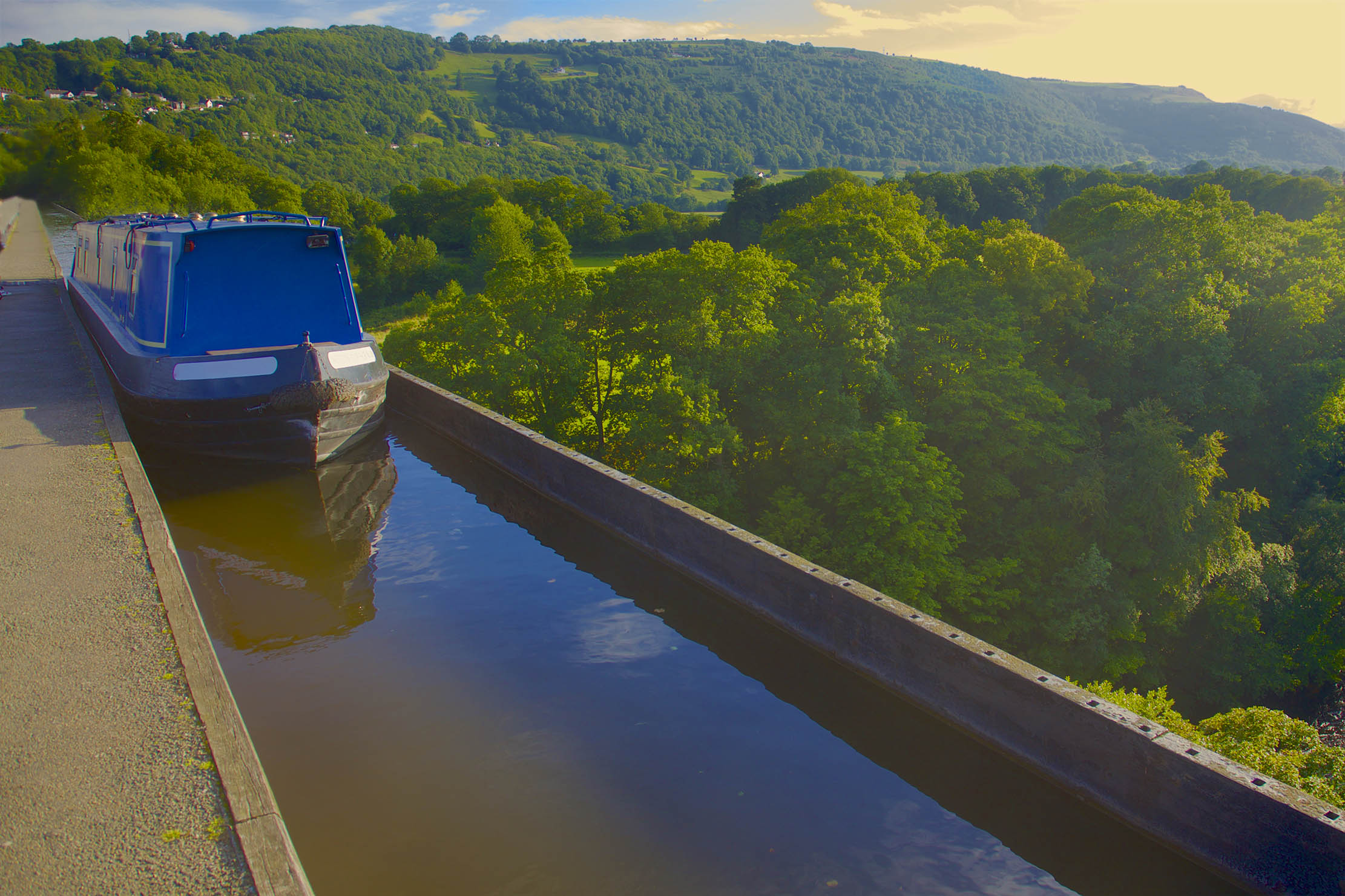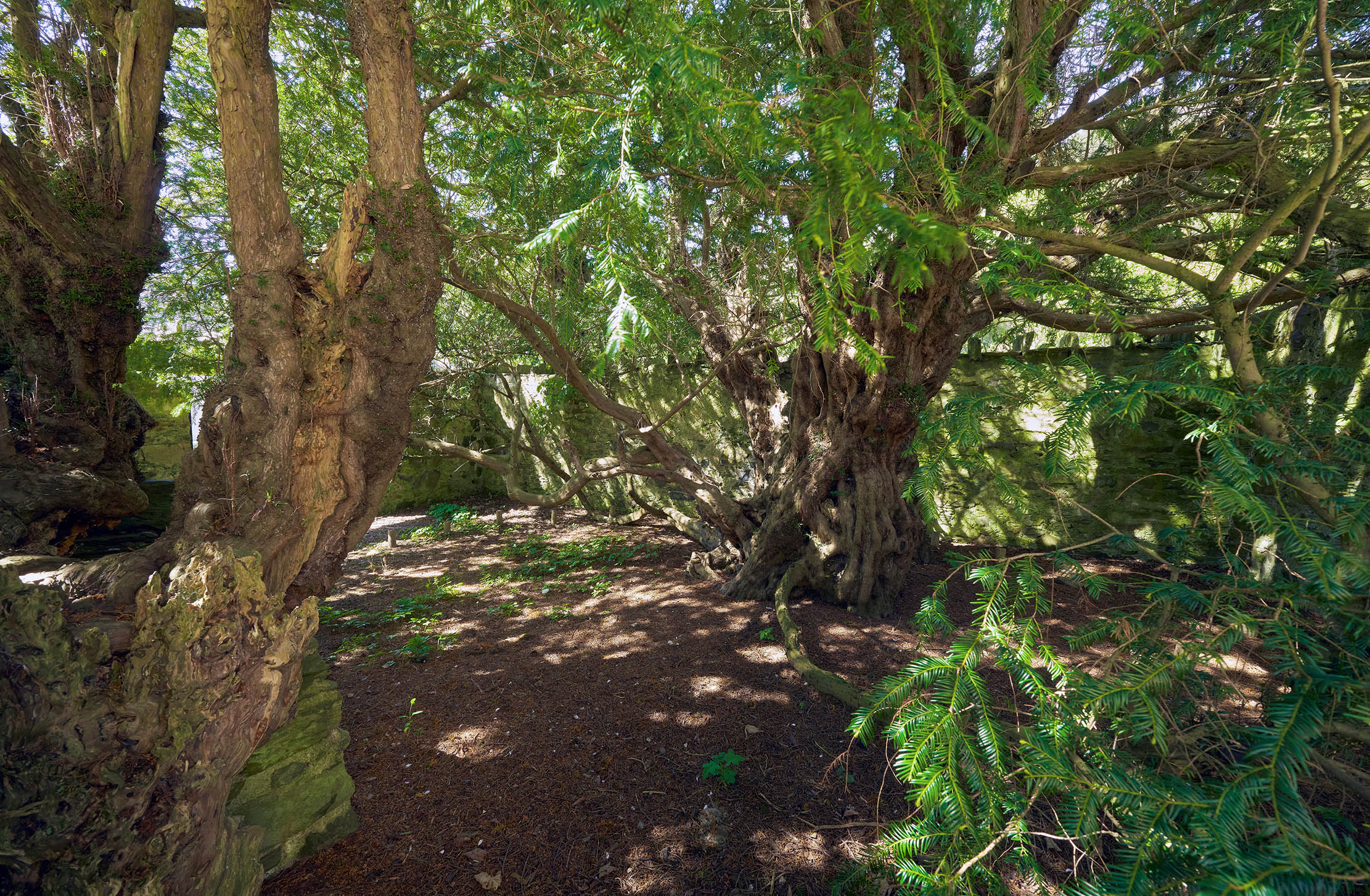The Pontcysyllte Aqueduct: Thomas Telford's 'ribbon of water in the sky'
The magnificent Pontcysyllte Aqueduct is one of the great testaments to Industrial Revolution ingenuity — and as beautiful as it is impressive. Jack Watkins takes a look.


Popular photographs of the Pontcysyllte Aqueduct show walkers blithely passing along its narrow towpath and canal boats inching along an 11ft-wide trough as their occupants airily gaze into the far distance, as if it was the most natural thing in the world to be 130ft up in the air with nothing more than a thin metal handrail on one side and a gaping void on the other between them and the River Dee far below. Not a venture to be undertaken on a gusty day — or for acrophobics on any sort of day.
The UNESCO World Heritage Site citation for the longest and highest navigable waterway in the world (the aqueduct was formally added to the World Heritage List in 2009) describes the Pontcysyllte Aqueduct as ‘a pioneering masterpiece of engineering and monumental architecture by Thomas Telford’. It certainly secured the reputation of Telford as one of the foremost civil engineers of the Industrial Revolution, and has drawn extravagant praise: '‘Of all the stupendous engineering structures produced by the Industrial Revolution, the Pontcysyllte is one of the most extraordinary: a ribbon of water in the sky’ wrote Hugh Pearman in the Wall Street Journal in 2006; while The Victorian Web describes it as a monument 'that reminds us that the Industrial Revolution produced beautiful objects as well as smoke-darkened cities and factories.'
However, although shorthand histories give Telford most of the credit for the work, up to the moment of his appointment, his chief employment had been as an architect and he seems to have had little experience of canal engineering.

It is, therefore, important to recognise the involvement of another key figure, William Jessop, the leading canal engineer, who almost certainly played a major role in the overall concept and who approved Telford’s designs. Matthew Davidson, a friend from his youthful days in Eskdale, acted as Telford’s assistant and project supervisor; another significant participant was William Hazledine, an experienced ironmaster.
With Jessop, who was initially consulted on the best overall route, acting as chief engineer, Telford was appointed in 1793 as ‘General Agent, Surveyor, Engineer, Architect and Overlooker to the Ellesmere Canal Company’. Built during the height of the ‘canal mania’ between 1790 and 1810, the aqueduct arose out of a plan to link the Ellesmere Canal (now known as the Llangollen Canal) with the Mersey, Dee and Severn rivers and the coal mines and ironworks of North Wales.

The chosen route presented some formidable engineering challenges, not the least of which was the need for a high-level crossing over the Dee Valley near Wrexham. The most straightforward section of the canal was in operation by 1795. For the more complex stretch across the Dee, Jessop first suggested a lower crossing, using locks to drop the canal in stages down the sides of the valley, but this cheaper method would have required back-pumping the water up to the canal’s higher levels.
The cast-iron trough, supported by 18 stone piers and an embankment, whether suggested by Jessop or Telford, enabled the canal to maintain its level uninterrupted, running straight across the valley. The name Pontcysyltte, meaning, literally, ‘the bridge that connects the river’, was actually taken from a triple-arched bridge further upstream.
Exquisite houses, the beauty of Nature, and how to get the most from your life, straight to your inbox.

The master masons on the project, John Wilson and John Simpson, oversaw the building of the slender, tapered piers, the walls of which were left hollow from about 70ft upwards to reduce the structural load on the lower sections. The supporting arches above the 18 spans were of cast iron, the castings for which, together with the trough, were brought from Hazledine’s Plas Kynaston Foundry at nearby Cefn Mawr. Once everything had been bolted into place, Telford filled the aqueduct with water and embarked on a six-month testing period to ensure the structure was watertight. The aqueduct was finally opened on November 26, 1805.
Although the canal was formally closed to navigation in 1944, in the latter part of the 20th century it was revived once more, having become a rallying point for the canal-preservation movement. The aqueduct itself is now a tourist attraction, as well as a still-functioning waterway.
Hot to visit the Pontcysyllte Aqueduct
Located roughly half-way between Oswestry and Wrexham, the viaduct is easy to visit — and free of charge, including the visitor centre run by the Canal & River Trust at Trevor Basin. You can walk the towpaths over the aqueduct itself as well as around the surrounding areas of the Llangollen Canal; there's a popular route which takes about an hour and a half, not including stops for taking pictures.

Skara Brae: The prehistoric village on Orkney that's older than Great Pyramid of Giza
The best-preserved Neolithic settlement in Europe isn't in a French cave or an Italian hillside; it's Skara Brae on Orkney,

The Fortingall Yew, the Scottish tree which was already 3,000 years old when Christ was born
Yews are well known for their longevity, but few — if any — can top the 5,000-year-old Fortingall Yew.

The Giant's Causeway
The Giant's Causeway is a geological marvel, a UNESCO World Heritage Site, and an unmissable stop for anyone heading to
Jack Watkins has written on conservation and Nature for The Independent, The Guardian and The Daily Telegraph. He also writes about lost London, history, ghosts — and on early rock 'n' roll, soul and the neglected art of crooning for various music magazines
